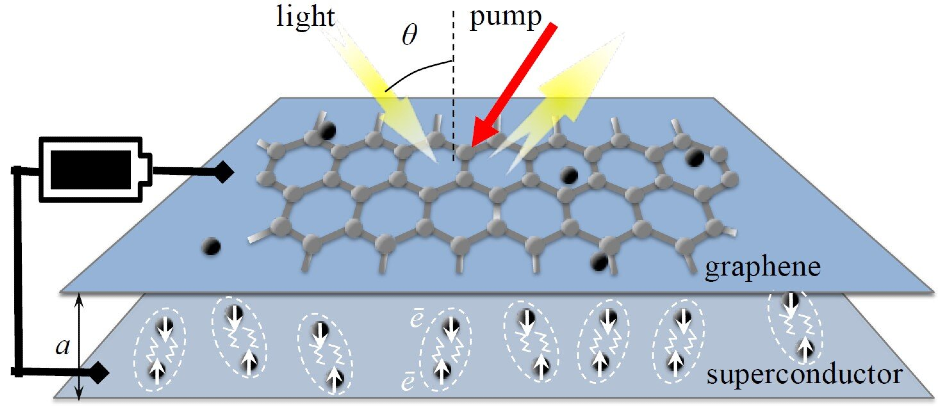 Light in the THz frequencies hits the ‘sandwich’ and is reflected with additional energy. Image Credit: Loughborough University
Light in the THz frequencies hits the ‘sandwich’ and is reflected with additional energy. Image Credit: Loughborough University
Researchers at Loughborough University in the UK have developed a system of detecting and amplifying elusive terahertz waves that will open up a new realm of technological possibilities. Applications in medical and communications are likely to be the first to benefit, with scientists suggesting that the establishment of a safe and non-destructive alternative method to X-rays will be the first major technological advancement to emerge.
The Potential of Terahertz Waves
Terahertz waves (THz) offer a world of possibilities to scientists and engineers. On the light frequency spectrum, they fit between microwave and infrared wavelengths. While microwaves and infrared light have been manipulated in many applications, seeing many technologies arise from exploiting their use over the decades, scientists have been limited in their ability to gain the benefits of utilizing THz waves because of their low energy. THz waves measure just 3 mm to 30 μm in wavelength, with existing sources of this wavelength not being able to produce waves strong enough to be used. This problem is well known in the scientific field as the "terahertz gap.”
To overcome the "terahertz gap” scientists at Loughborough University set out to design a system with the abilities to detect and amplify these elusive waves so that they can be used in the creation of innovative new technologies.
Amplifying Terahertz Waves
To achieve this amplification, the team of scientists created a new optical transistor that functions as a THz amplifier. Their innovation uses graphene, a supermaterial that has already caused a stir in the scientific community for its properties of being incredibly strong while also being thin and flexible.
The team used this carbon allotrope along with a high-temperature semiconductor to develop their THz amplifier. Two layers of transparent graphene were placed either side a layer of a superconductor that works to trap the massless electrons of graphene which attach themselves to the THz waves once they are exposed to them, having the impact of amplifying the waves.
The process sees the THz waves being reflected back like a mirror. What’s important is that the system allows more light to be reflected back than was introduced to the device. The process uses either a battery or light to supply external energy to the device’s surface, on contact, graphene converts the THz photons into massless electrons which are reflected back as energized THz photons. This process sees the THz photons taking the energy from graphene to amplify their signal.
A Device That Will Further Technological and Scientific Capabilities
The team is planning to continue to further the capabilities of their device and will be testing prototypes in the near future. Already, the team reports that they have an amplifier device that will be commercially available in just a year.
Many technological and scientific advances are expected to occur with the help of this new device. The Loughborough University team believes that it will prove fundamental to furthering our knowledge about the human brain and nature. This is because THz waves exist in abundance in the natural world, with biological organisms emitting and absorbing this wavelength. THz waves are the only wavelength that humans have not yet adopted. For many years, devices that rely on infrared, visible light, X-rats, microwaves, and all other bandwidths have been commonplace in the scientific and public domain.
The properties of THz waves make them suited to developing the scientific fields of biology, chemistry, diagnostics, environmental control, imaging, spectroscopy, tomography, and more. The device that has been established by the British researchers will allow scientists across a number of disciplines harness and exploit this wavelength for the first time, opening the door to the possibility of numerous creations that have, up until now, been impossible.
Disclaimer: The views expressed here are those of the author expressed in their private capacity and do not necessarily represent the views of AZoM.com Limited T/A AZoNetwork the owner and operator of this website. This disclaimer forms part of the Terms and conditions of use of this website.